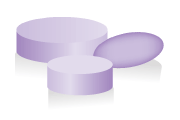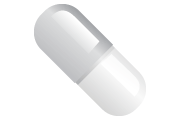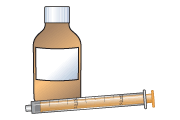Nifedipine for high blood pressure
This leaflet is for parents and carers about how to use this medicine in children. Our information may differ from that provided by the manufacturers, because their information usually relates to adults. Read this leaflet carefully. Keep it somewhere safe so that you can read it again.
Name of medicine
- Nifedipine
- Brand names: Adalat, Adipine, Coarcten, Fortipine, Hypolar Retard, Nifedipress, Tensipine, Valni XL
Why is it important for my child to take Nifedipine?
High blood pressure can cause damage to internal organs. Nifedipine is one of a group of medicines called calcium-channel blockers that help to lower blood pressure.
What is Nifedipine available as?
- Tablets: 10 mg, 20 mg, 30 mg, 40 mg, 60 mg
- Capsules: 5 mg, 10 mg, 20 mg, 30 mg, 60 mg
- Liquid medicine can be ordered specially from your pharmacist
When should I give Nifedipine
Nifedipine may be given once, twice or three times each day. Your doctor will tell you how often to give it.
- Once a day: this can be in the morning OR the evening.
- Twice a day: this should be once in the morning and once in the evening. Ideally, these times are 10–12 hours apart, for example some time between 7am and 8am, and between 7pm and 8pm.
- Three times each day: this should be once in the morning, once in the early afternoon and once in the evening. Ideally, these times are at least 6 hours apart, for example 8am, 2pm and 8pm.
Give the medicine at about the same time(s) each day so that this becomes part of your child’s daily routine, which will help you to remember.
How much should I give?
Your doctor will work out the amount of Nifedipine (the dose) that is right for your child. The dose will be shown on the medicine label.
It is important that you follow your doctor’s instructions about how much to give.
How should I give Nifedipine?

Tablets
- If your child is unable to swallow a tablet whole, it is important that you speak with your pharmacist or doctor before you consider crushing the tablet, as not all brands can be crushed.
- Tablets should be swallowed with a glass of water, squash or juice. Your child should not chew the tablet.

Capsules
- Capsules should be swallowed whole with a glass of water or squash (but not juice). Your child should not chew the capsules.

Liquid medicine
- Shake the medicine well. Measure out the right amount using an oral syringe or a medicine spoon. You can get these from your pharmacist. Do not use a kitchen teaspoon as it will not give the right amount. You can also dilute the medicine (measured with a medicine spoon) in a small amount of water or squash. Make sure your child takes it all straight away.
When should the medicine start working?
Your child’s blood pressure will start to come down after a few days, although you will not see any difference in your child.
What if my child is sick (vomits)?
- If your child is sick less than 30 minutes after having a dose of Nifedipine, give them the same dose again.
- If your child is sick more than 30 minutes after having a dose of Nifedipine, do not give them another dose. Wait until the next normal dose.
If your child is sick again, seek advice from your family doctor, nurse, pharmacist, or hospital. They will decide what to do based on your child’s condition and the specific medicine involved.
What if I forget to give it?
If you usually give it once a day: Give the missed dose when you remember during the day, as long as this is at least 12 hours before the next dose is due. If you remember after this time, do not give the missed dose. Wait until the next usual dose.
If you usually give it twice a day: If you remember up to 4 hours after you should have given a dose, give your child the missed dose. For example, if you usually give a dose at about 7am, you can give the missed dose at any time up to 11am. If you remember after that time, do not give the missed dose. Give the next dose as usual.
If you usually give it three or four times a day: You do not need to give the missed dose. Give the next dose as normal.
Never give a double dose of Nifedipine.
What if I give too much?
If you think you may have given your child too much Nifedipine, contact your doctor or local NHS services (details at end of leaflet). Have the medicine or packaging with you if you telephone for advice.
It can be dangerous to give too much Nifedipine because it may make your child’s blood pressure fall.
Are there any possible side effects?
We use medicines to make our children better, but sometimes they have other effects that we don’t want (side effects).
Side effects you must do something about
If your child is short of breath or is wheezing, or their face, lips or tongue start to swell, or they develop a rash, they may be allergic to Nifedipine. Take your child to hospital or phone for an ambulance straight away.
If your child has an irregular or fast heart rate (fluttery or racing), contact your doctor straight away.
Other side-effects you need to know about
Your child may get some of the following side effects when they first start taking Nifedipine. These usually wear off after a few days as your child gets used to the medicine. If they are still a problem after a week, or you are worried, contact your doctor but continue to give Nifedipine.
Your child may feel dizzy or light-headed when they stand up, or may faint. Encourage them to stand up slowly, and to sit or lie down if they feel dizzy or light-headed. If this happens often, contact your doctor to check your child’s blood pressure and blood sugar level, as it may be too low.
Your child may feel sick or be sick (vomit) when they first start taking Nifedipine. Giving the medicine with some food may help. This effect should wear off after a few days as your child’s body gets used to the medicine. If it is still a problem after a week, contact your doctor for advice.
They may get headaches.
Your child may also need to pass urine (wee) more often than usual.
Your child’s eyesight may be blurred (fuzzy).
Your child may get swelling in their legs or joints, or may have muscle pain or pins and needles.
Your child’s gums may become tender or swollen, and may bleed when they brush their teeth. To help, your child should brush and floss their teeth regularly and massage their gums.
If your child or develops an itchy rash or swelling of the hands and feet, becomes sweaty, or gets a yellowish tinge to the skin or whites of the eyes (jaundice), contact your doctor straight away, as they may be unusually sensitive to Nifedipine .
There may sometimes be other side effects that are not listed above. If you notice anything unusual and are concerned, contact your doctor. You can report any suspected side effects to a UK safety scheme at mhra.gov.uk/yellowcard
Can other medicines be given at the same time as Nifedipine?
- You can give your child medicines that contain paracetamol, unless your doctor has told you not to.
- Nifedipine should not be taken with some medicines. Tell your doctor or pharmacist about any other medicines your child is taking before giving Nifedipine.
Check with your doctor or pharmacist before giving any other medicines to your child. This includes herbal and complementary medicines.
Is there anything else I need to know about this medicine?
- Your child should not eat grapefruit or drink grapefruit juice as this may increase the amount of Nifedipine in the body, which could be harmful.
General advice about medicines
- Try to give medicines at about the same times each day, to help you remember.
- If you are not sure a medicine is working, contact your doctor but continue to give the medicine as usual in the meantime. Do not give extra doses, as you may do harm.
- Only give this medicine to your child. Never give it to anyone else, even if their condition appears to be the same, as this could do harm.
- Make sure that you always have enough medicine. Order a new prescription at least 2 weeks before you will run out.
- Make sure that the medicines you have at home have not reached the ‘use by’ date on the packaging. Give old medicines to your pharmacist to dispose of.
- If you think someone else may have taken the medicine, contact a doctor straight away.
Where should I keep this medicine?
- Keep the medicine in a cupboard, away from heat and direct sunlight.
- It does not need to be kept in the fridge.
- Make sure that children cannot see or reach the medicine.
- Keep the medicine in the container it came in.
Who to contact for more information?
Your child’s doctor, pharmacist or nurse will be able to give you more information about Nifedipine and about other medicines used to treat high blood pressure.
England: NHS 111
Tel 111
www.nhs.ukScotland: NHS 24
Tel 111
www.nhs24.scotNorthern Ireland: NI Direct
Wales: NHS 111 Wales
Tel 111
www.111.wales.nhs.ukCopyright disclaimer
Version [1]. © NPPG, RCPCH and WellChild, all rights reserved. Review by February 2016.
The primary source for the information in this leaflet is the British National Formulary for Children. For details on any other sources used for this leaflet, please contact us through our website, www.medicinesforchildren.org.uk.
We take great care to make sure that the information in this leaflet is correct and up-to-date. However, medicines can be used in different ways for different patients. It is important that you ask the advice of your doctor or pharmacist if you are not sure about something. This leaflet is about the use of these medicines in the UK, and may not apply to other countries. The Royal College of Paediatrics and Child Health (RCPCH), the Neonatal and Paediatric Pharmacists Group (NPPG), WellChild and the contributors and editors cannot be held responsible for the accuracy of information, omissions of information, or any actions that may be taken as a consequence of reading this leaflet.
